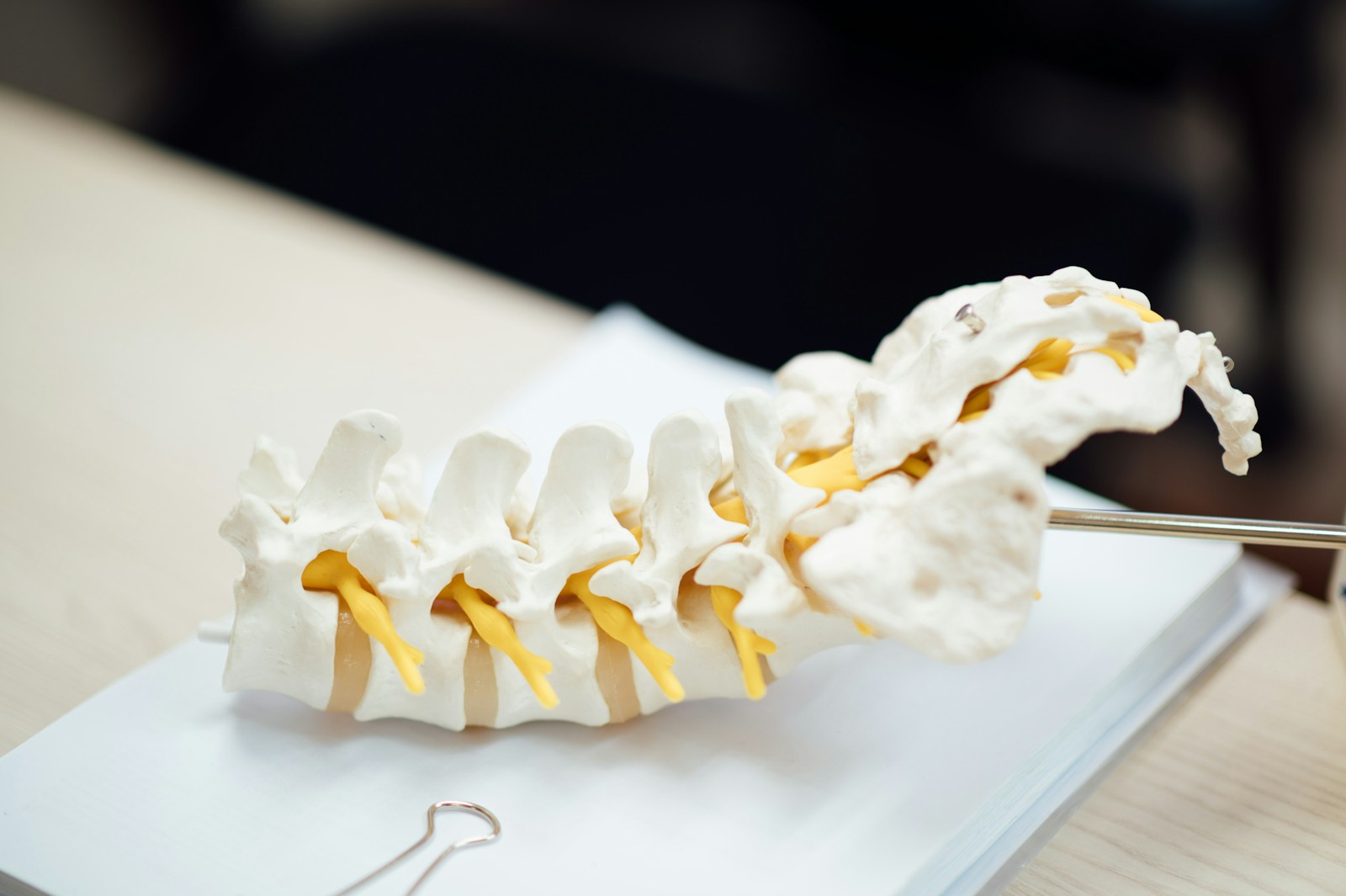Spinal Cord Stimulation (SCS) is a fascinating area of medical science, offering a non-drug approach to managing chronic pain through the application of electrical signals. This innovative technology, while not without its risks, has been shown to enhance patient mobility and quality of life, and reduce reliance on opioids. But how exactly does it work? What is the procedure like for patients? And what does the future hold for this intriguing field? Let’s delve into the many facets of Spinal Cord Stimulation.
Understanding Spinal Cord Stimulation
To thoroughly understand spinal cord stimulation (SCS), it is essential to explore the intricacies of this intricate neurosurgical procedure that involves the application of low-level electrical signals to the spinal cord via a small device implanted under the skin. This device, the SCS system, is composed of several components, including a pulse generator, leads, and a remote controller – all important SCS accessories.
The pulse generator, implanted beneath the skin, generates the low-voltage electrical current. Leads, thin insulated wires, deliver these electrical signals directly to the spinal cord, while the remote controller allows the patient to adjust the level of stimulation.
SCS Maintenance is an integral part of the treatment process, ensuring the system functions optimally over time. This involves regular checks for battery life, ensuring the leads are in the correct position, and monitoring for potential complications such as infection or device migration.
While the SCS system’s complexity necessitates a thorough understanding for best usage and maintenance, its capacity to alleviate chronic pain signifies its intrinsic value in the field of neurosurgery. The detailed functionality of the SCS components and their maintenance are pivotal to the success of this innovative treatment modality.
Historical Overview of SCS
Delving into the historical evolution of spinal cord stimulation reveals a fascinating journey of scientific discovery and technological advancement, spanning several decades. The concept of spinal cord stimulation (SCS) was first introduced in the 1960s by its inventors, Dr. Norman Shealy and Dr. Patrick Wall. They proposed that electrical stimulation of the dorsal column could effectively modulate pain signals, a groundbreaking idea at the time.
In the 1970s, advancements in technology allowed for the development of the first fully implantable SCS systems. These early systems, while greatly improving patients’ quality of life, were limited by battery lifespan and the complexity of surgical implantation.
Over the following decades, continuous technological advancements led to substantial improvements in SCS systems. The 1990s marked the introduction of multi-channel systems, offering enhanced targeting of specific nerve fibers. The 21st century brought about rechargeable batteries, enhancing device longevity, and wireless technology, increasing patient convenience.
The history of SCS highlights a remarkable interplay of innovative thinking from SCS inventors and rapid technological advancements. Each progression has brought us closer to the most effective SCS system, capable of efficiently managing chronic pain while minimizing side effects and improving patient quality of life.
How Does SCS Work?
At its core, spinal cord stimulation operates on the principle of delivering low-level electrical signals to the spinal cord in order to intercept and modulate pain signals before they reach the brain. The process involves the placement of electrodes at specific sites within the epidural space, which are then connected to an implantable pulse generator. This device generates electrical currents that interfere with the transmission of pain signals.
Recent SCS technology advancements have allowed for more precise control of these electrical signals. High-frequency and burst stimulation modes, for example, offer a wider range of pain control options and have the potential to deliver relief without the tingling sensation previously associated with this therapy.
From the perspective of patient experiences, many report significant reductions in pain, improved mobility, and better overall quality of life. However, as with any medical intervention, the effectiveness of SCS varies among individuals. Factors such as the type and location of pain, the specific SCS technology used, and individual physiological characteristics can all influence the outcome. Thus, while SCS represents a promising approach to chronic pain management, it requires careful patient selection and individualized treatment planning.
The Procedure: Step-by-step
Having explored the underlying principles of spinal cord stimulation, we now turn our focus to the specifics of the procedural steps involved in this innovative approach to pain management. The procedure typically begins with the provision of local anesthesia and sedation to guarantee the patient’s comfort. A small incision is then made in the back, through which the doctor inserts a hollow needle into the epidural space around the spinal cord.
The spinal cord stimulator leads, carrying the electrical impulses, are guided through this needle and positioned accordingly. After successful placement, the leads are connected to an external trial stimulator. The patient’s response to the stimulation is observed and adjustments are made to optimize pain relief.
The trial period lasts for about a week, during which the patient and doctor assess the effectiveness of the stimulation. If successful, a permanent stimulator is implanted under the skin, often in the buttock or abdomen. Procedure recovery involves careful wound care, limited physical activity, and pain management. Post-operative care may include follow-up appointments for stimulator adjustments and monitoring the healing process. This procedure is reversible, and components can be removed if needed.

Benefits of Spinal Cord Stimulation
In evaluating the merits of spinal cord stimulation (SCS), it is imperative to highlight its potential benefits, chief among them being significant reduction in chronic pain and improved quality of life. SCS uses a device that sends small electrical currents to the nerves, effectively modifying or masking the pain signals before they reach the brain. This technique can cater to a wide range of pain conditions, including but not limited to neuropathic pain, ischemic pain, and visceral pain.
Despite SCS Misconceptions, the procedure is not a panacea but a part of a broader pain management strategy. It has been consistently demonstrated to be more effective when integrated with other treatments and lifestyle changes. Particularly, it can serve as a viable alternative for patients who have exhausted other therapies or those who are not suitable for invasive surgeries.
In comparison with Alternative Therapies, SCS provides a more targeted approach to pain management, allowing for a customized treatment plan. It can adjust to the changing pain patterns and can be turned off or removed if necessary, offering flexibility and control to patients. Studies have shown that SCS can potentially lead to decreased opioid use, making it a desirable option in the current opioid crisis.
Potential Risks and Complications
While spinal cord stimulation proves advantageous for many, it is essential to take into account the potential risks and complications that may arise, such as device malfunction, infection, and unexpected changes in stimulation. Complication management is a key factor in the post-operative phase of spinal cord stimulation procedures.
Device malfunction, although relatively rare, can occur due to lead migration or mechanical failure of the device. This can lead to loss of therapeutic effect, necessitating device adjustment or replacement. Infections are another risk, typically arising in the early post-operative period. These can lead to system explantation if not managed promptly and effectively, emphasizing the importance of strict aseptic technique and post-operative care.
Unexpected changes in stimulation can also occur, leading to changes in the pattern or intensity of perceived stimulation. This may result in inadequate pain relief or uncomfortable sensations for the patient. Risk mitigation strategies can include careful patient selection, meticulous surgical technique, and regular post-operative follow-up and device programming.
It is paramount that clinicians are well-versed in these potential complications and have a proactive plan for their management, ensuring excellent patient outcomes in spinal cord stimulation therapy.
Ideal Candidates for SCS
As we progress in our exploration of Spinal Cord Stimulation (SCS), the subsequent discourse will focus on the criteria for ideal candidates for this procedure. This discussion will encompass a meticulous analysis of SCS eligibility, in conjunction with an evaluation of the potential benefits and risks associated with the treatment. The objective is to delineate a clear profile of patients who may stand to gain the most from SCS, thereby enhancing the efficacy of patient selection.
Determining SCS Eligibility
Patient suitability for Spinal Cord Stimulation (SCS) is determined by a variety of specific medical criteria, ensuring only the most appropriate candidates are selected for this advanced treatment option. Eligibility requirements usually include chronic pain resistant to other treatments, absence of untreated drug addiction, and a positive psychological evaluation. SCS Misconceptions often lead patients to believe they are ineligible; however, it is essential to understand that only a medical professional can accurately assess candidacy. A successful trial stimulation is another critical criterion, as it indicates the patient’s responsiveness to the therapy. Other factors such as patient’s overall health, their commitment to follow-up care, and realistic expectations about the outcomes also play a significant role in determining SCS eligibility.
Benefits and Risks
In the field of Spinal Cord Stimulation (SCS), understanding the potential benefits and associated risks is important for best patient outcomes and informed decision-making.
From the perspective of SCS technology evolution, the benefits are numerous:
- Significant pain relief: Studies report up to 70% reduction in pain.
- Improved quality of life: Patients experience an increase in daily activities and overall life satisfaction.
- Reduced reliance on pain medications: SCS can decrease or eliminate the need for pharmaceutical pain management.
- Reversible procedure: If ineffective or unwanted, the system can be turned off or removed.
However, risks include surgical complications, system malfunction, or discomfort. The patient experience with SCS varies significantly, hence, an individualized approach to risk-benefit analysis is essential.

Real-life SCS Success Stories
While it’s important to understand the scientific basis of spinal cord stimulation (SCS), delving into real-life success stories can provide a thorough perspective on its practical efficacy. From the patient perspective on SCS, this treatment has often been instrumental in greatly reducing chronic pain and enhancing the quality of life. A case in point is a 45-year-old woman, plagued by persistent lower back pain who experienced a dramatic decrease in discomfort post-SCS implementation.
Even with these benefits, patients have also candidly shared SCS maintenance challenges they face. One such instance involves a 60-year-old male patient who required routine adjustments to his SCS device to ensure excellent pain relief. This re-emphasizes the necessity for ongoing post-procedure care and patient support.
In another scenario, a 52-year-old woman expressed immense satisfaction with SCS, citing a reduction in her dependence on narcotics for pain management. She, however, highlighted the need for careful battery management of her SCS device, underscoring the important role of patient education in ensuring the successful use of SCS.
These real-life instances underscore the potential of SCS in managing chronic pain, while also shedding light on the need for thorough patient support systems.
Comparing SCS to Other Treatments
Considering the extensive spectrum of chronic pain management strategies, it becomes imperative to evaluate the effectiveness and implications of spinal cord stimulation (SCS) in juxtaposition with other prevalent treatments. This SCS Alternatives Comparison will primarily focus on non-surgical treatments.
- Physical Therapy: Physical therapy, a non-surgical treatment, primarily concentrates on pain management via exercise and muscle conditioning. However, its effectiveness is somewhat subjective, based on individual tolerance and consistency.
- Medication: Pain relief medication, both over-the-counter and prescription varieties, are frequently used. Yet, they may present side-effects and dependency risks that SCS does not.
- Pain Pumps: Implanted pain pumps deliver medication directly to the spinal cord. While invasive, they’re less so than SCS. Efficacy can be limited by tolerance development and potential for mechanical failure.
- Cognitive Therapy: This psychological approach to pain management can help patients cope with chronic pain. Its effectiveness varies greatly among individuals and doesn’t directly address the physiological sources of pain.
Costs and Insurance Coverage
When assessing the financial landscape of spinal cord stimulation (SCS), one must also take into account both the direct costs associated with the procedure and the varying degrees of insurance coverage. The direct costs can be divided into several components: the initial purchase of the SCS device, the surgical implantation of the device, postoperative care, and potential future maintenance or replacement costs.
Insurance coverage for SCS varies greatly depending on the patient’s specific insurance plan and provider, introducing a level of unpredictability into the financial equation. Often, insurance limitations come into play, whether in the form of restrictions on the types of devices covered, the necessity of prior authorization for the procedure, or the requirement of a trial period of conservative treatments before SCS can be approved.
Additionally, out of pocket expenses are another important factor to take into account. These may include deductibles, co-payments, and coinsurance, which can add significantly to the overall cost of the procedure. Moreover, there may be additional expenses not covered by insurance, such as travel costs for treatment or follow-up appointments. Therefore, a full understanding of the cost and insurance landscape is important for potential SCS patients.
Future Developments in SCS
Looking ahead, advancements in technology and medical research are paving the way for promising developments in the field of spinal cord stimulation (SCS). The evolution of SCS technological advancements is focused on improving efficacy, minimizing side effects, and enhancing patient experience.
Consider these four key future developments:
- Critical Medicine: Medical research indicate a trend towards tailoring SCS treatment plans based on individual patient characteristics, offering a more personalized therapeutic approach.
- Advancements in Electrode Design: Future SCS devices aim to have more advanced electrode designs for targeted stimulation, reducing unwanted side effects.
- Wireless Technology: The application of wireless technology in SCS devices is expected to improve patient comfort and mobility, reducing the need for invasive procedures for battery replacements.
- Artificial Intelligence (AI) Integration: AI could play a crucial role in improving patient outcomes by predicting response to SCS therapy and optimizing device settings.
Global SCS market trends indicate a surge in demand for these devices, driven by an ageing population and increasing prevalence of chronic pain conditions. The future of SCS seems promising, with a focus on technological innovation and individualized patient care.
Frequently Asked Questions
Can I Engage in Physical Activities or Sports After Receiving Spinal Cord Stimulation?
After receiving such a procedure, physical activities or sports can typically be resumed. However, this is dependent on the individual’s stimulator maintenance and post-procedure diet. Consultation with a healthcare provider is recommended for personalized advice.
Does Spinal Cord Stimulation Alleviate Pain Immediately or Gradually Over Time?
The relief from pain through stimulator adjustment typically occurs gradually over a trial period, rather than immediately. This adjustment period allows for the optimization of the device to the individual’s specific pain management needs.
Is the Spinal Cord Stimulator Device Visible Externally After the Procedure?
No, the stimulator device is not visible externally after the procedure. However, sensation changes may be experienced and device maintenance is important to guarantee its peak function and longevity. Regular follow-ups are recommended.
Can the Spinal Cord Stimulator Be Removed or Deactivated if Desired?
Yes, the implanted device can be deactivated or removed if desired. However, these actions come with potential implant risks and necessitate careful device maintenance. A medical professional should be consulted for proper procedure and guidance.
How Does Temperature, Weather, or Atmospheric Pressure Changes Affect the Spinal Cord Stimulator’s Function?
Changes in temperature, weather, or atmospheric pressure do not typically affect Stimulator Performance Factors. However, extreme conditions might influence battery life. Detailed studies on Weather Influence Mechanisms on such devices are limited, warranting further research.

